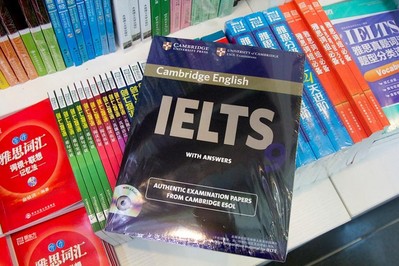 返回
教育头条
返回
教育头条

雅思口语考试中卡壳怎么办呢
相信很多小伙伴在写作文时,总会有源源不断的灵感,而在雅思口语陈述时,却不知道如何开口表达,断断续续词不达意。然而太过亢长书面的陈述,也时常让沟通变得困难,有时候话讲到一半就突然卡住了,这时就需要一些实用的短语和对话中的填充物,让英语更地道更自然,也能缓解突然卡壳的尴尬哦~
1、表达不出时的对话填充物
(1)How should I put it? 我该怎么说呢
好处:This phrase shows that you are looking for the best expression.It also gives a heads-up that you are about to say something that might be a bit tricky to explain.(这句话让你感觉你是在寻找恰当的表达方式,同时也提醒对方你接下来要表达的内容是复杂的。)
(2)What’s the word I am looking for?
什么词什么说法能表达我的意思呢?
拓展:What’s the phrase/expression I am looking for?
不恰当句子举例:“What am I trying to say?” might make you sound clueless: “what am I trying to say?”
坏处:让人感觉你自己都不知道自己在讲什么。
恰当句子举例:What’s the word I am looking for? Don’t remand me.(我想说什么来着,别提醒我。)
好处:It shows that you really care, when you use this phrase, you’re also not expecting an answer, but also yourself instead.(这句话表明了你是真的在认真思考,说这句话通常不是真的在提问,而是给自己时间过渡。)
(3)it’s on the tip of my tongue.
我想说的话就在嘴边
好处:“The tip of my tongue” is such a great image, as if the word is hiding on the tip of your tongue and it wants to be heard: “the tip of my tongue” (特别形象,好像词真的就在你的舌尖,马上要蹦出来一样。)
(4)I just had it
我刚才还记得的
不恰当举例:I forgot
坏处:“I forgot” is in the same category as “what am I trying to say?”一样,都不是佳的填充对话空白方式这样会显得你心不在焉,给人你不是很想聊天的感觉。
(5)it’s just not coming to me
这个词就是怎么都想不起来啊
拓展:it slipped my mind(我疏忽了忘了。)
2、长话短说时的实用短语
(1)Basically
主要的,基本上
恰当句子举例:Basically, her job is to deal with foreign customers.(基本上,他的工作就是负责国外客户。)
好处:说到这个词意思就在暗示对方,细节不必多说,马上要说的就是核心和重要的内容。

(2)For the most part
总的来说
拓展:Overall, In brief, In short, All in all
恰当句子举例:For the most part, she is a good girl.(总的来说,她是一个好女孩。)
(3)Boils down to
归结为
拓展:It all boils down to:归根结底
恰当例子举例:The issue really boils down to whether customers will be willing to pay more for the same product or not.(这个问题归结于客户愿不愿意花更多的钱买同样的东西。)
好处:这个短语非常的形象,就像沸腾的蒸汽都蒸发掉了,只剩下重要的东西。
学会了这些短语,在日常交流中,当表达跟不上思想时,再也不害怕支支吾吾会尴尬了。在口语考试时,如果遇到了卡壳的情况,不用过分紧张,多用这些词句,说不定会让你的成绩有所转机哦,快学起来吧!
1、表达不出时的对话填充物
(1)How should I put it? 我该怎么说呢
好处:This phrase shows that you are looking for the best expression.It also gives a heads-up that you are about to say something that might be a bit tricky to explain.(这句话让你感觉你是在寻找恰当的表达方式,同时也提醒对方你接下来要表达的内容是复杂的。)
(2)What’s the word I am looking for?
什么词什么说法能表达我的意思呢?
拓展:What’s the phrase/expression I am looking for?
不恰当句子举例:“What am I trying to say?” might make you sound clueless: “what am I trying to say?”
坏处:让人感觉你自己都不知道自己在讲什么。
恰当句子举例:What’s the word I am looking for? Don’t remand me.(我想说什么来着,别提醒我。)
好处:It shows that you really care, when you use this phrase, you’re also not expecting an answer, but also yourself instead.(这句话表明了你是真的在认真思考,说这句话通常不是真的在提问,而是给自己时间过渡。)
(3)it’s on the tip of my tongue.
我想说的话就在嘴边
好处:“The tip of my tongue” is such a great image, as if the word is hiding on the tip of your tongue and it wants to be heard: “the tip of my tongue” (特别形象,好像词真的就在你的舌尖,马上要蹦出来一样。)
(4)I just had it
我刚才还记得的
不恰当举例:I forgot
坏处:“I forgot” is in the same category as “what am I trying to say?”一样,都不是佳的填充对话空白方式这样会显得你心不在焉,给人你不是很想聊天的感觉。
(5)it’s just not coming to me
这个词就是怎么都想不起来啊
拓展:it slipped my mind(我疏忽了忘了。)
2、长话短说时的实用短语
(1)Basically
主要的,基本上
恰当句子举例:Basically, her job is to deal with foreign customers.(基本上,他的工作就是负责国外客户。)
好处:说到这个词意思就在暗示对方,细节不必多说,马上要说的就是核心和重要的内容。

(2)For the most part
总的来说
拓展:Overall, In brief, In short, All in all
恰当句子举例:For the most part, she is a good girl.(总的来说,她是一个好女孩。)
(3)Boils down to
归结为
拓展:It all boils down to:归根结底
恰当例子举例:The issue really boils down to whether customers will be willing to pay more for the same product or not.(这个问题归结于客户愿不愿意花更多的钱买同样的东西。)
好处:这个短语非常的形象,就像沸腾的蒸汽都蒸发掉了,只剩下重要的东西。
学会了这些短语,在日常交流中,当表达跟不上思想时,再也不害怕支支吾吾会尴尬了。在口语考试时,如果遇到了卡壳的情况,不用过分紧张,多用这些词句,说不定会让你的成绩有所转机哦,快学起来吧!
以上就是教育宝头条带来的雅思口语考试中卡壳怎么办呢详细介绍,想要查看更多雅思资讯,敬请关注教育宝头条,也可以加我微信18560125702,我会解答你的学习问题。返回教育宝头条
【免责声明】本文仅代表作者本人观点,与教育宝无关。教育宝对文中陈述、观点判断保持中立,不对所包含内容的准确性、可靠性或完整性提供任何保证。请读者仅作参考,特此声明!





